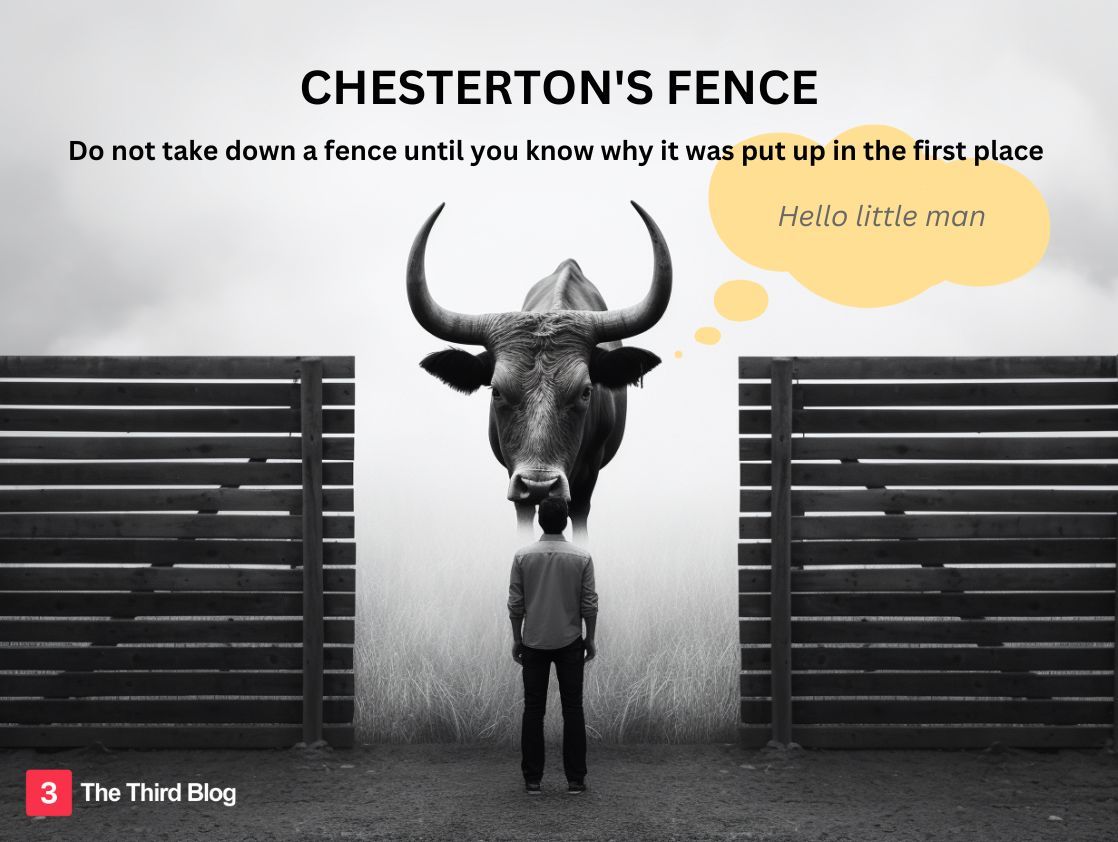The Riddle of Chesterton's Fence
TLDR: Chesterton's Fence urges understanding the purpose of existing systems before changing them. It promotes informed decisions, respect for past wisdom, and thoughtful change. It's about mindfully questioning, learning, and then deciding on dismantling the 'fence'.

In our fast-paced world, we are often eager to make changes, disrupt the status quo, and challenge the traditional way of doing things. But what if there was a wisdom in first understanding why things are the way they are before attempting to change them? This is the central theme behind the fascinating concept known as "Chesterton's Fence".
Changes in leadership often begin with what I call 'the Big Bang'. In order to show the board or the investors they aim to make significant change, they will tend to make a big (often over the top) proposal in the first 4-6 weeks. This could be huge layoffs, discontinued systems, organisation restructure etc.
Often...this is exactly why they were hired...but I would caution haste.
Chesterton's Fence is a principle that originates from a metaphor by the writer G.K. Chesterton. He posited:
before you remove a fence (or a law, a tradition, a practice), it's crucial to understand why it was put up in the first place.
In Chesterton's words, "If a thing is worth doing, it is worth doing badly." By this, he meant that it's not sufficient to dismiss something as irrelevant or outdated just because it seems so on the surface. Instead, it's essential to fully understand its purpose, context, and the problem it was meant to address before discarding it.

Why Chesterton's Fence Matters
The concept of Chesterton's Fence reminds us to approach change with a sense of humility and respect for the wisdom embedded in existing systems. While it's easy to dismiss old practices or traditions as outmoded, they often carry the wisdom of previous generations and address issues that may not be immediately apparent.
This doesn't mean we should resist change, but rather, that we should approach it thoughtfully. By understanding the 'why' behind a 'fence', we can make more informed decisions about what to change and how to change it, and anticipate potential problems that the change could bring.
So, how do we apply this principle in our lives?
First, pause before you push for change. Ask questions, do your research, and make sure you fully understand the purpose of the 'fence' you're thinking of tearing down.
Second, engage with others. Seek the perspectives of those who have more experience or a different viewpoint. They might provide insights about the 'fence' that you hadn't considered.
Lastly, think critically and creatively. Is the 'fence' truly outdated, or does it serve a function that's still necessary? Is there a way to modernize the 'fence' or to achieve its function in a different way?
Chesterton's Fence is an age-old wisdom that encourages us to approach change with a mindful, inquisitive, and respectful attitude. In our quest for improvement and progress, let's not forget to pay heed to the wisdom of the past. I am a huge benefactor in helping businesses with digital transformation...but there's never hard in inspecting the fence first.
T3B

